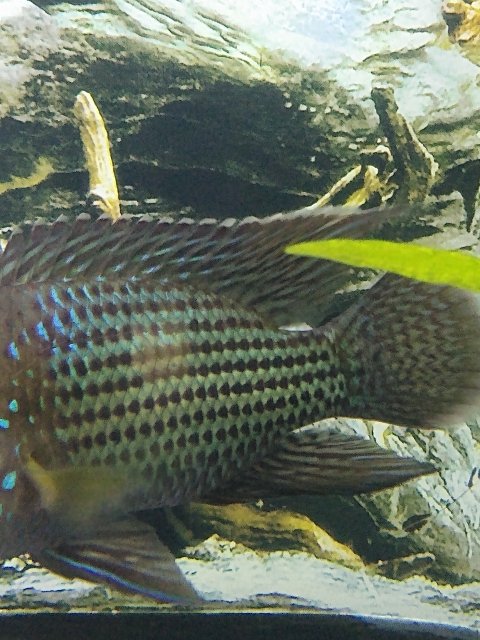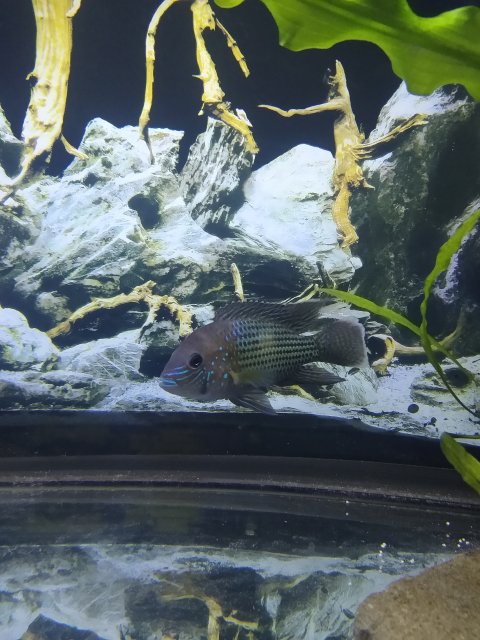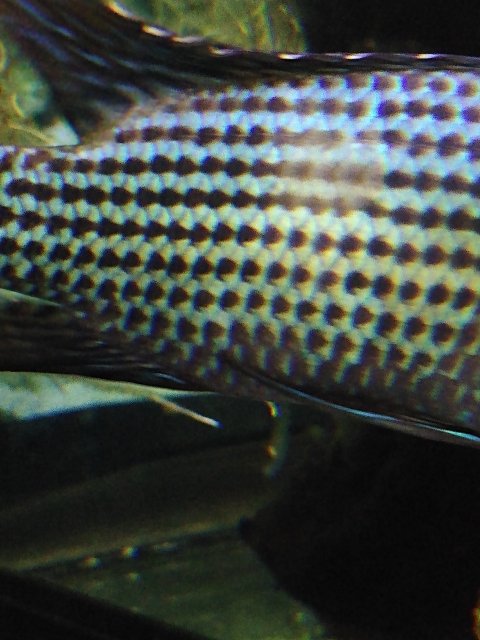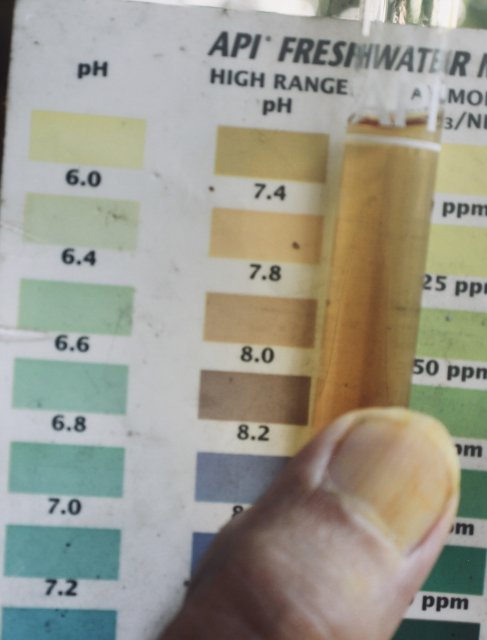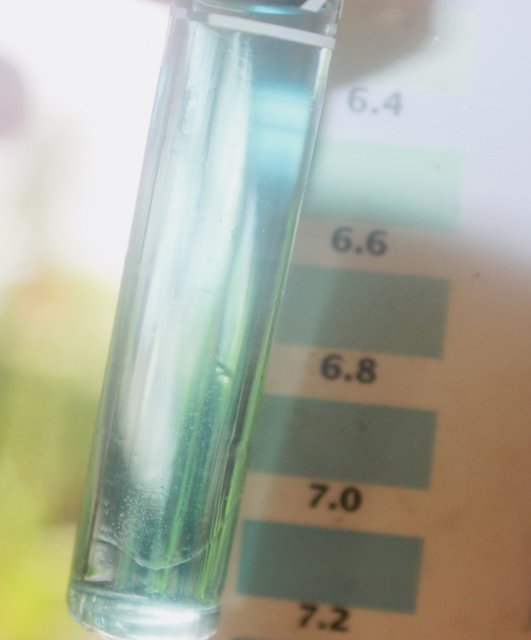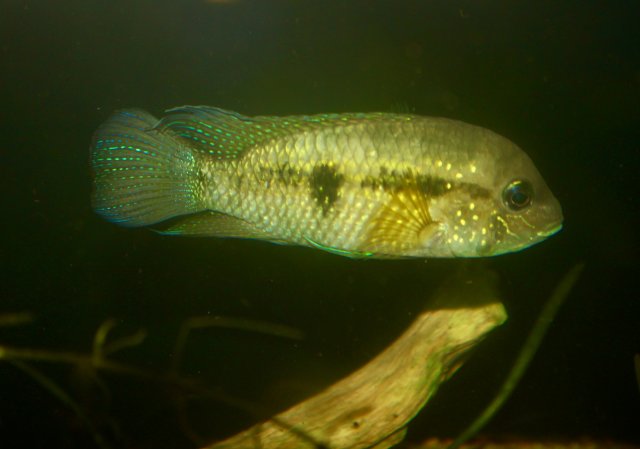GTs do not need you to lower pH for them. They come from west of the Andes, where natural water conditions are more alkaline than the Amazon region.
So if you are adding vinegar you may be creating a fluctuating pH and alkalinity bouncing situation which may be causing stress.
And stress can create an upset of balance of bacteria in the gut.
An introduced parasite does not sound like the problem in your tank (unless the reason the GT is solo, because all other fish died from some disease), but if stress is occurring, a bacterial imbalance could bring on the symptoms you describe.
As to your tap water changing, when seasons change, the source of your water parameters can change, including the pH.
Here in Panama I keep cichlids of the genus Andinoacara (same genus a your GT), and even here as seasons change, so do the natural water conditions.
In the dry season, pH can reach above 8, (almost 9 in certain riverine areas)
In the rainy season pH easily drops to 7 or below.
These seasonal pH changes are relatively gradual, and the native Andinoacara adjust.
The same type seasonal changes happen west of the Andes, with rain and snow melt in the mountains.
View attachment 1439939
Above is pH of my tank during the "dry season" (I had to use the high range standard)
Below during the rainy season, as you can see, the low range standard needed to be used.
View attachment 1439940
These gradual seasonal changes even prompt breeding activity in my Andinoacara, so if it were me, I'd stop fooling around with vinegar and allow your normal seasonal changes to occur naturally in the tank.
Below
The wild caught Andinoacara I keep below.
View attachment 1439941
